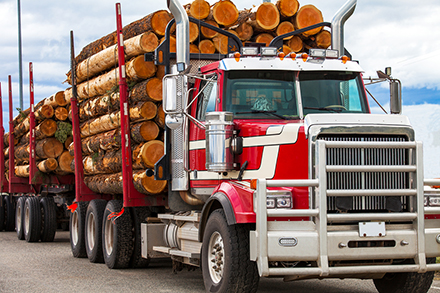Net sawmill capacity in North America declined by 2% in 2023 as slowing lumber demand and over-production made their mark.
A flood of sawmill expansions and new greenfield mills over the last six to seven years has added large amounts of lumber capacity, mainly in the US South. These capacity increases have tended to offset numerous mill closures, mainly those in British Columbia, Canada (BC) and the US West, with a few surprising closures recently in the US South.
And as lumber prices moved below breakeven prices in some regions in 2023, higher cost mills were closed, sometimes to rationalize timber supplies around multiple company sawmill sites. Nine sawmills were permanently closed in 2023. So far in 2024, three new sawmills started operating in the US South while nine more sawmills – in all regions of North America, except Eastern Canada – have announced closures, not to mention many shift reductions at BC mills, some permanent.
Forisk’s North America top ten softwood lumber producers’ ranking had an estimated 36.9 billion board feet of lumber capacity in 2023 and represented 49 % of total North American capacity. Five of the top ten companies have their head offices in Canada. West Fraser remains the largest producer in North America with 7.0 billion board feet of capacity, while Weyerhaeuser and Interfor were closely grouped in second and third spot (see table).
The top US softwood producers were led by Weyerhaeuser with 4.6 billion bf of capacity. The top ten companies had about 50% of total US softwood lumber capacity. The top Canadian lumber producer was West Fraser with 3.5 billion bf of capacity. The top five Canadian companies had about 47% of total Canada softwood lumber capacity, all with operations in the US.
In the North American lumber markets, April can often be the start of two-to-three-month cycle of higher prices. In contrast to last year, W-SPF 2×4 prices (FOB mill) plummeted starting late February and did not recover until July 2023. In 2024, W-SPF prices have so far stayed in the US$400s and slightly eclipsed their 2023 peak price of US$460/Mbf in March. Things have been looking better for SPF, but lower prices are inevitable!
It is the US South, however, that region has been experiencing very weak lumber prices. Normally, SYP trades at a US$ 50-60/Mbf premium to W-SPF on a FOB mill basis, but in mid-April it was trading at a massive US$ 120/Mbf discount (W-SPF at US$ 410 and SYP-W at US$ 290). Many SYP sawmills are now below cash-costs, and this has resulted in some temporary and permanent sawmill curtailments in the South – something not seen since the housing market collapse 15 years ago. Consequently, SYP mill capacity curtailments are expected prices to allow prices to move higher over the next few months and more.
At the high end, US Inland lumber prices have come off 10% from their recent peak levels. Fir-Larch 2×4 KD R/L prices in mid-April were US$ 525/MBF and Hemlock-Fir at US$ 520 – both are huge FOB mill premiums to W-SPF and SYP.
Nevertheless, SPF lumber prices in BC are moving lower to below break-even levels due to constrained and expensive log supplies that make sawmilling so difficult in that province. So far this year, closure announcements include West Fraser (Fraser Lake) and Western FP (Port Alberni), and curtailments or reduced output at a variety of mills includes at Tolko Industries (Williams Lake), Interfor (scattered mill production reductions), with Dunkley, Teal Jones, San Group and others have been reported as taking some temporarily downtime or shift reductions.
The US market will probably be the most stable global market in 2024 despite having a few headwinds. High mortgage rates from global inflation and a shortage of existing homes for sale has been a benefit to new residential home builders as a key option for new home buyers. US housing demand and housing starts are expected to remain like 2023 in 2024, and slightly better if the pending recession is avoided. A net benefit to lumber demand is that more single-family houses are forecast to be started in 2024 than in 2023 and they consume three times the lumber as multi-family units.
In other major markets such as Europe, China and Japan, lumber demand so far in 2024 has been negatively impacted by oversupply, high interest rates and a lack of consumer confidence, creating flat to lower demand and prices. Essentially, the global lumber markets are not doing too well, as there is still too much supply chasing weak to perhaps stable demand. The global outlook for 2024 is for flat to perhaps some increase in demand in a few regions, but stable markets will still require a constrained supply – this could be a challenge in 2024 in some markets. Most, including myself, expect the second half of the year to be better than the first half – early signs indicate that this could be very possible.
These topics and others will be in full discussion at the GLOBAL WOOD SUMMIT in Vancouver BC between October 28 and 30! Visit: https://russtaylorglobal.com/global-wood-summit-vancouver-bc/
Russ Taylor is a US-based forest industry consultant and analyst.






